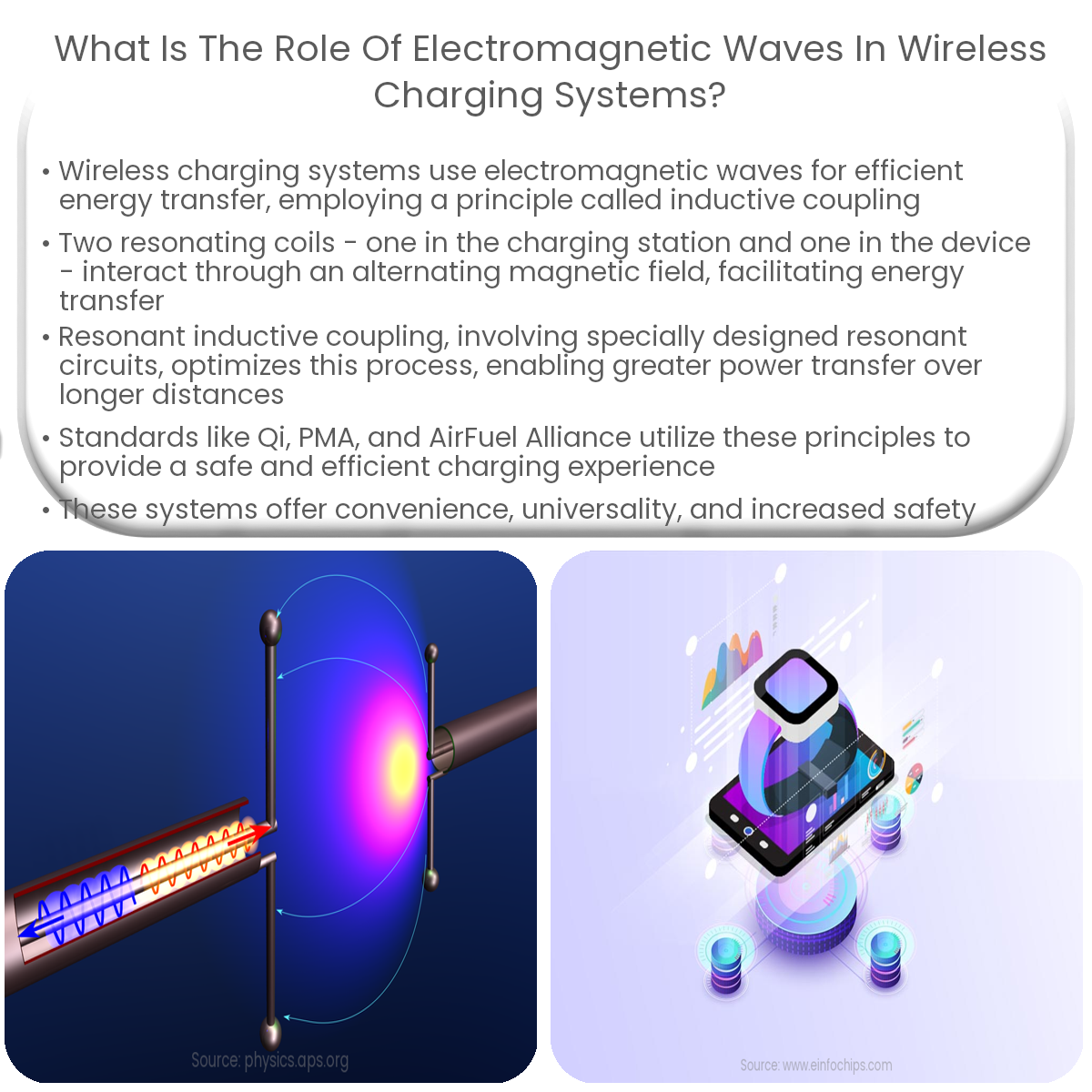Electromagnetic waves enable wireless charging by transferring energy through inductive coupling between the charging station and the device.
Understanding the Role of Electromagnetic Waves in Wireless Charging Systems
Wireless charging systems have revolutionized the way we power our electronic devices, offering convenience and ease of use. In this article, we will explore the role of electromagnetic waves in these systems and how they enable efficient energy transfer.
Electromagnetic Waves: The Core of Wireless Charging
Electromagnetic waves are a type of energy that travels through space in the form of oscillating electric and magnetic fields. They are responsible for various forms of communication and energy transfer, including wireless charging systems.
Inductive Coupling: The Key Principle
Wireless charging systems rely on a principle called inductive coupling. This method involves two coils of wire—one in the charging station and one in the device being charged—that are tuned to resonate at the same frequency. The charging station generates an alternating magnetic field, which induces an electric current in the coil within the device. This current then charges the device’s battery.
Resonant Inductive Coupling: Enhancing Efficiency
Resonant inductive coupling is a technique that further enhances the efficiency of wireless charging systems. It involves the use of resonant circuits, which are specifically designed to store and transfer energy at a particular frequency. This optimizes the energy transfer between the two coils, allowing for higher power transfer and longer distances between the charging station and the device.
- Qi Standard: The most common wireless charging standard, Qi (pronounced “chee”), utilizes resonant inductive coupling to enable devices to charge efficiently.
- Power Matters Alliance (PMA): Another popular standard, PMA focuses on providing a safe and efficient wireless charging experience.
- AirFuel Alliance: This standard merges two previously competing standards, Rezence and A4WP, aiming to create a more unified approach to wireless charging.
Benefits of Electromagnetic Waves in Wireless Charging
- Convenience: Wireless charging eliminates the need for physical connectors, reducing wear and tear on devices and making it easier to charge multiple devices simultaneously.
- Universality: Many devices, including smartphones, smartwatches, and headphones, are now compatible with wireless charging, enabling users to charge multiple devices with a single charging station.
- Safety: Wireless charging systems reduce the risk of electrical shock, as there are no exposed connectors.
In conclusion, electromagnetic waves play a critical role in wireless charging systems by enabling energy transfer through inductive coupling. This technology has made charging our electronic devices more convenient, efficient, and safe. As wireless charging continues to evolve, we can expect even more impressive advancements in this field.


